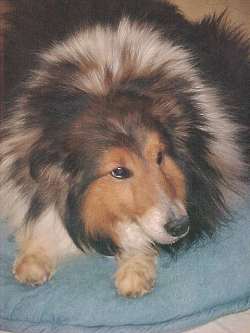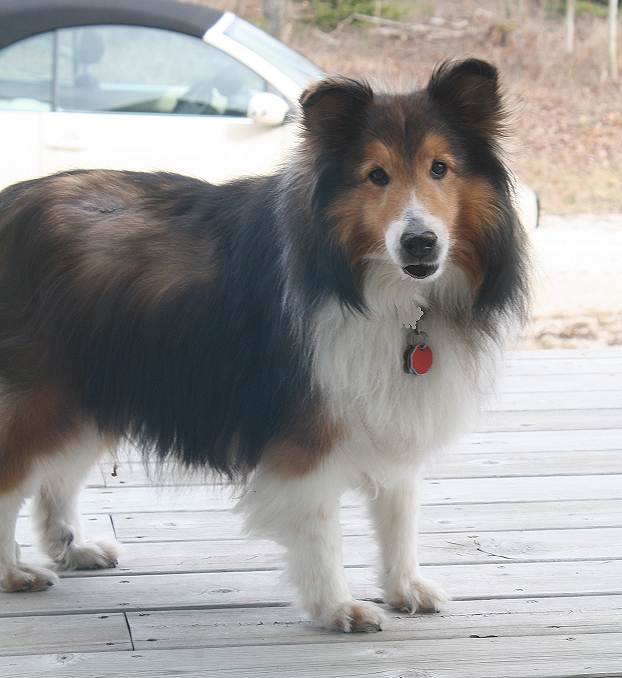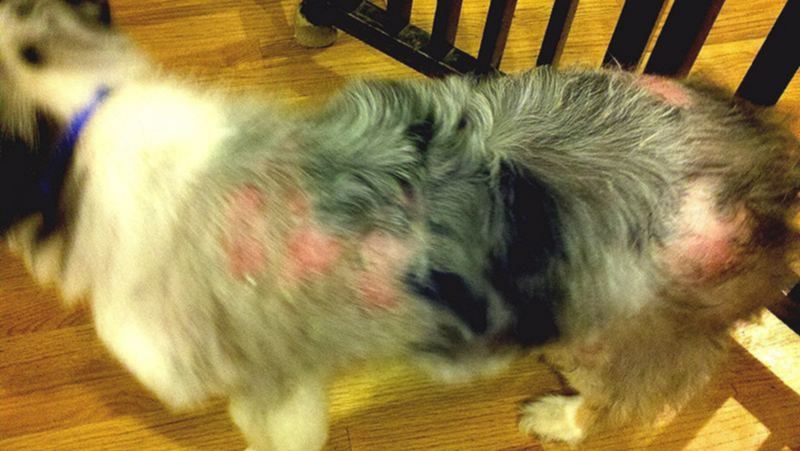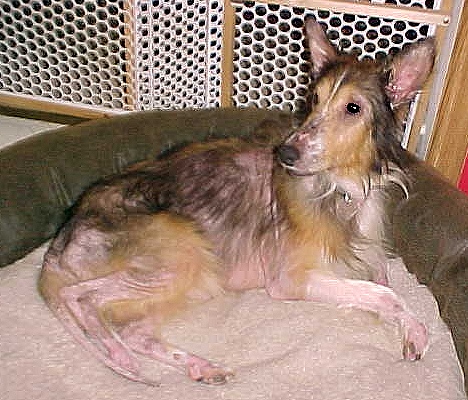"My Sheltie is scratching and itchy all over."
"My Sheltie keeps gaining weight"
"My sheltie has terrible allergies"
"My Sheltie has constant ear infections"
"My Shelties skin and coat look awful"
If any of these sound familiar, your Sheltie may have "Hypothyroidism" .or "Low Thyroid".
It is one of the most common ailments in this breed, yet it goes undiagnosed MOST of the time........
Why? Because a Shelties Thyroid must run "higher" than most other breeds. In other words, a "low normal' reading for a Sheltie Thyroid results is NOT OK.
A Sheltie who tests "Low Normal" can and often does have multiple problems. If you have landed on this page because your Sheltie has many of the symptoms below, and your Sheltie tested "Low Normal" then this is likely the reason.
A low thyroid Sheltie may display some or all of these symptoms:
Overweight! Weight gain or the inability to lose weight.....ravenous appetite, acts starving all the time. A sheltie who is overweight and normal diet and exercise don't help.....should be checked for low thyroid.
Skin problems. Problems will begin on the rear of the dog, on the lower back and tail. (usually, not always) (Thus the term "Thyroid Tail") When your dog is first experiencing Low Thyroid, you will likely notice hair loss, dry flakey skin on the tail and rear of the dog. It will progress and spread the longer the dog goes without treatment. Dry, itchy, flakey skin. (can have terrible dandruff) The Sheltie may or may not scratch and chew at his skin (depends how infected it is) ...often mis-diagnosed as an allergy. Mild cases can just involve itchy irritated skin. The more severe cases often have infected, open sores. These dogs often smell bad because of the infection in the skin, or the resulting yeast infection in the skin from Antibiotic use. Low Thyroid hair loss is most often on the trunk of the body and the tail. Thyroid tests should be run on any Sheltie with skin problems.
Ear infections. Either bacteria or yeast based. Ongoing or occasional. The lower the thyroid the more chronic the ear infections become. If a Sheltie has gone too long with low thyroid, the ears can thicken and become deformed from constant infection. (Often called Cauliflower Ear) Any ear infection in a Sheltie should be accompanied by a thyroid test. When we have a dog come in with an ear infection, the thyroid is the first thing we check.
Coat problems .... Low Thyroid shelties just don't have healthy looking coats. It can vary from thin, short, sparse, fuzzy, and often downy soft fur. Or, there can be only a thin overcoat, with no undercoat. In all cases, a low thyroid Sheltie just does not have a nice thick, long coat. Shelties who have gone years without treatment will often have wide-spread hair loss. (bald spots)
Runny eye or eyes. A clear watery discharge coming from the eye. It is often misdiagnosed as a blocked tear duct. (note: a yellow or green discharge from the eye is not low thyroid.
Behavior problems.......fearfulness, aggression, grumpy, etc
Seizures!!
Cholesterol deposits (foggy spots) on one or both eyes.
High cholesterol blood test results
Inability to be bred......and/or lack of coming into season. OR....if bred, inability to become pregnant.
Here are some photos we have gathered.....
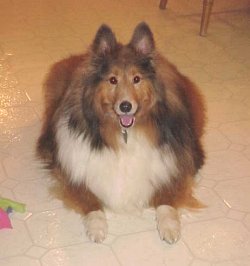

Torry: Torrys Thyroid reading (T4) was .8 ....considered normal by most Vets. Torry's owners had tried everything to get his weight down. Torry came here at 55 pounds, on a frame that should weigh 20. Started on Thyroid meds and look at him now.
Barney: This poor dog came into rescue weighing 65 pounds. His owners had tried everything but he continued to gain weight. Barney now weighs 32 pounds and is happy and healthy. Barneys T4 was 1.2....again, considered normal by Vets.
Lola Widespread hair loss. Open infected sores. She smelled terrible. Nasty ear infections in both ears. T4 was 1.0 (considered normal by many tests) Once on we treated all the infections, and we got her Thyroid levels up, she began regrowing her coat.
Randy- Randy had so many ear infections he had disfigured ears, all because his Thyroid was too low. We did have to surgically removed this mass. Randy made a full recovery....once his thyroid levels came up. No more ear infections.
Jenna - Vets called her Thyroid "lower normal". Clearly it was too low. Jenna started on Thyroid meds, and look how she blossomed.
The reason that so many Shelties with Low Thyroid go undiagnosed......is because Shelties need to maintain a higher thyroid level than most other breeds. A sheltie must always run high normal to be truly normal. We suggest making sure the T4 is in the upper 1/2 to 1/3 of normal. For example; lets say your test's normal range is from .8 - 3.5 If your Sheltie's tests result is 1.2, many tests will call that "normal". We disagree. We would like to see a Sheltie test at 2 or higher on this scale. We have seen some extremely sick Shelties that will test at under a 2.
It is also important to know that disease or illness will lower the T4 in a Sheltie. So please make sure you work with your Vet as you are looking at a possible Low Thyroid diagnosis.
Another interesting scenario we have run into. Let's say that your Sheltie has one or more low thyroid symptoms..... but the T4 tests show he is in the upper range already. Don't give up on thyroid !! Sometimes the old "If it walks like a duck" thing applies here. Your Sheltie could just be starting down the Low Thyroid road. If you catch it early, great job!! If the first test does not catch it, continue to test every 2-6 months before you rule it out.
If you are struggling with diagnosing your Sheltie as Low Thyroid, we encourage you to contact
http://www.hemopet.org
Dr. Jean Dodds is also available for a consult with you or your Vet.
OR
You may visit our Vet.
Once you start your Sheltie on Thyroid Medication, it is very important that it be given correctly. Thyroid Medication must be given on an empty stomach, either 1 hour before OR 3 hours after eating.
We have found that giving the medication with food, can lower its effectiveness significantly.
Low Thyroid in Shelties
This is a "worst case" photo. The dog in this picture, Marty, has low thyroid that has gone untreated for years. His ears are inflamed and infected. Hair loss is wide-spread. His skin is oozy and infected in places. He has runny eyes. The only reason he is not fat is because he did not have food to eat. This case is one of the worst we have had.... this is NOT typical, but this IS what will happen if this goes on for years. Marty's T4 was .8 on a scale of .8 - 3.5 Not really that low.....but disastrous for a Sheltie.




